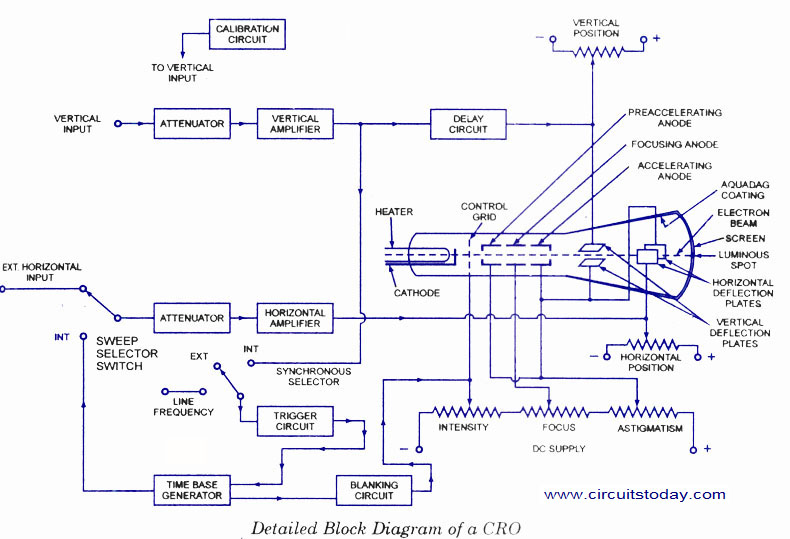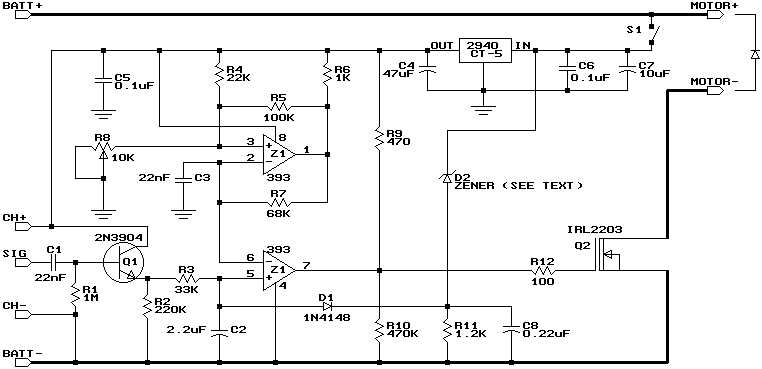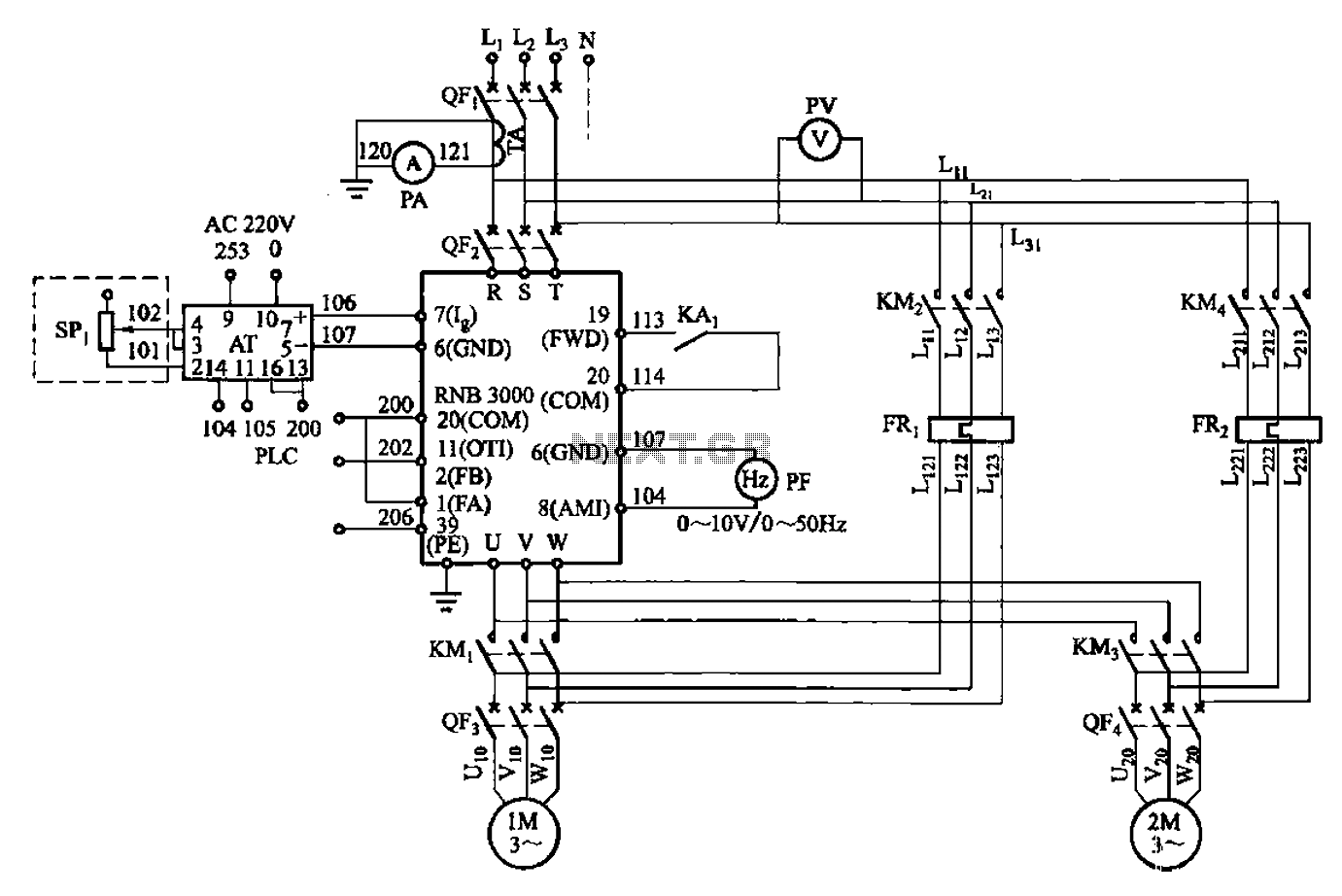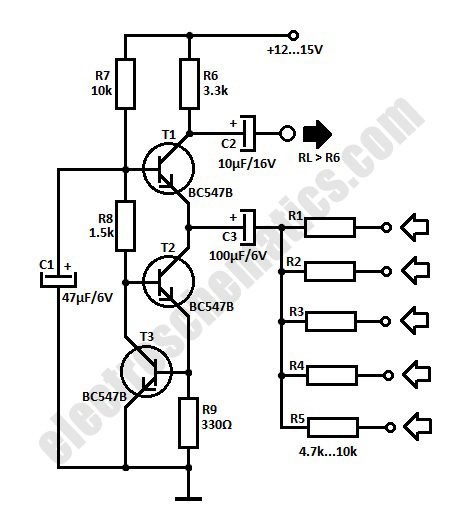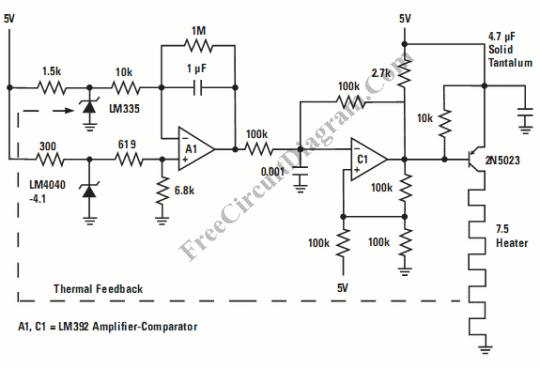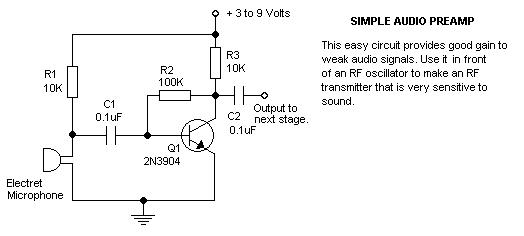
simple bass treble tone control
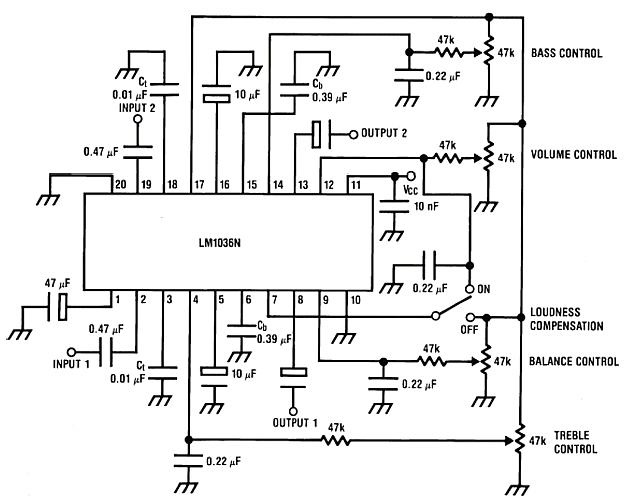
The LM1036 is a DC-controlled circuit designed for adjusting tone (bass/treble), volume, and balance in stereo applications such as car radios, televisions, and audio systems. It features an additional control input that enables straightforward loudness compensation. Four control inputs allow for the manipulation of bass, treble, balance, and volume functions by applying DC voltages from a remote control system or, alternatively, from four potentiometers that can be biased using a Zener regulated supply available on the circuit.
The LM1036 integrates multiple functionalities essential for audio processing in consumer electronics. The device operates by accepting DC voltage levels that correspond to the desired adjustments in audio output. Each of the four control inputs—bass, treble, balance, and volume—can be connected to a remote control system or manually adjusted via potentiometers. This flexibility allows for user-friendly operation, catering to both automated and manual audio adjustments.
In terms of implementation, the circuit typically includes a Zener diode to provide a stable reference voltage for the potentiometers, ensuring consistent performance across various operating conditions. The tone control section employs a differential amplifier configuration that adjusts the audio signal's frequency response, allowing users to enhance or attenuate specific frequency ranges for optimal sound quality.
The volume control section utilizes a similar approach, where the audio signal's amplitude is adjusted based on the applied DC voltage. The balance control allows for the adjustment of audio levels between the left and right channels, ensuring a balanced stereo output, which is crucial for an immersive listening experience.
Additionally, the loudness compensation feature is particularly beneficial in scenarios where low listening levels may result in a perceived loss of bass and treble frequencies. By integrating this feature, the LM1036 ensures that audio quality remains consistent regardless of volume levels, making it an ideal choice for various audio applications.
Overall, the LM1036 is a versatile and effective solution for audio control in stereo systems, providing users with comprehensive control over their audio experience. Its design facilitates easy integration into existing systems, making it a valuable component for engineers and designers in the audio electronics field.The LM1036 is a DC controlled tone (bass/treble), volume and balance circuit for stereo applications in car radio, TV and audio systems. An additional control input allows loudness compensation to be simply effected. Four control inputs provide control of the bass, treble, balance and volume functions through application of DC voltages from a remo
te control system or, alternatively, from four potentiometers which may be biased from a zener regulated supply provided on the circuit. 🔗 External reference
The LM1036 integrates multiple functionalities essential for audio processing in consumer electronics. The device operates by accepting DC voltage levels that correspond to the desired adjustments in audio output. Each of the four control inputs—bass, treble, balance, and volume—can be connected to a remote control system or manually adjusted via potentiometers. This flexibility allows for user-friendly operation, catering to both automated and manual audio adjustments.
In terms of implementation, the circuit typically includes a Zener diode to provide a stable reference voltage for the potentiometers, ensuring consistent performance across various operating conditions. The tone control section employs a differential amplifier configuration that adjusts the audio signal's frequency response, allowing users to enhance or attenuate specific frequency ranges for optimal sound quality.
The volume control section utilizes a similar approach, where the audio signal's amplitude is adjusted based on the applied DC voltage. The balance control allows for the adjustment of audio levels between the left and right channels, ensuring a balanced stereo output, which is crucial for an immersive listening experience.
Additionally, the loudness compensation feature is particularly beneficial in scenarios where low listening levels may result in a perceived loss of bass and treble frequencies. By integrating this feature, the LM1036 ensures that audio quality remains consistent regardless of volume levels, making it an ideal choice for various audio applications.
Overall, the LM1036 is a versatile and effective solution for audio control in stereo systems, providing users with comprehensive control over their audio experience. Its design facilitates easy integration into existing systems, making it a valuable component for engineers and designers in the audio electronics field.The LM1036 is a DC controlled tone (bass/treble), volume and balance circuit for stereo applications in car radio, TV and audio systems. An additional control input allows loudness compensation to be simply effected. Four control inputs provide control of the bass, treble, balance and volume functions through application of DC voltages from a remo
te control system or, alternatively, from four potentiometers which may be biased from a zener regulated supply provided on the circuit. 🔗 External reference
